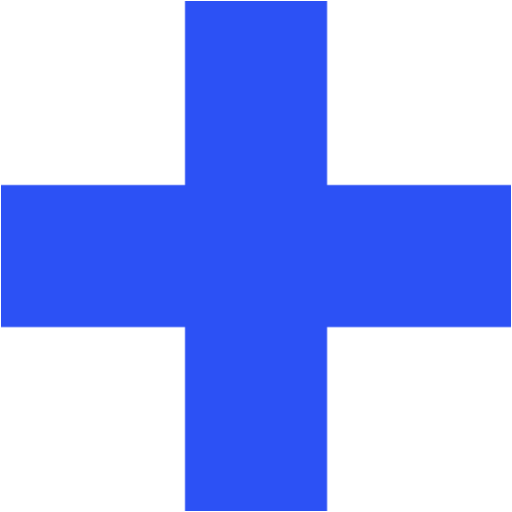Dermatology is a key part of General Practice. Here is a list of 101 common dermatological conditions in approximate order of incidence. Click on the link for more details.
- Acne
- Atopic Dermatitis
- Contact Dermatitis
- Psoriasis
- Seborrheic Dermatitis
- Rosacea
- Urticaria
- Tinea
- Herpes Simplex
- Varicella Zoster
- Impetigo
- Scabies
- Cellulitis
- Basal Cell Carcinoma
- Squamous Cell Carcinoma
- Melanoma
- Actinic Keratosis
- Alopecia
- Warts
- Corns and Calluses
- Athlete’s Foot
- Nail Fungal Infections
- Molluscum Contagiosum
- Vitiligo
- Pityriasis Rosea
- Ichthyosis
- Keratosis Pilaris
- Lichen Planus
- Sunburn
- Photodermatoses
- Cutaneous Drug Reactions
- Intertrigo
- Pilonidal Cyst
- Epidermoid Cysts
- Lipomas
- Folliculitis
- Milia
- Hidradenitis Suppurativa
- Perioral Dermatitis
- Cutaneous Lupus Erythematosus
- Scleroderma
- Cutaneous Candidiasis
- Dermatophytosis
- Erythema Multiforme
- Telangiectasia
- Spider Naevi
- Angiomas
- Keloids and Hypertrophic Scars
- Melasma
- Hand Dermatitis
- Dyshidrotic Eczema
- Pediculosis
- Bed Bug Bites
- Cherry Angiomas
- Sebaceous Hyperplasia
- Seborrheic Keratosis
- Acanthosis Nigricans
- Lentigines
- Purpura
- Cutaneous Tags
- Stasis Dermatitis
- Cutaneous Vasculitis
- Cutaneous Sarcoidosis
- Pemphigus Vulgaris
- Bullous Pemphigoid
- Dermatomyositis
- Paronychia
- Erysipelas
- Naevi
- Pyogenic Granuloma
- Pityriasis Alba and Pityriasis Versicolour
- Pityriasis Lichenoides
- Discoid Eczema
- Pruritus Ani
- Pruritus Vulvae
- Mastocytosis
- Ganglion Cyst
- Hemangiomas
- Raynaud
- Erythema Nodosum
- Lichen Sclerosus
- Granuloma Annulare
- Morphea
- Lichen Simplex Chronicus
- Actinic Prurigo
- Dermatofibroma
- Harlequin Ichthyosis
- Acrodermatitis Enteropathica
- Rosacea Fulminans
- Syringomas
- Fox
- Porokeratosis
- Darier’s Disease
- Perforating Dermatoses
- Behçet’s disease
- Xanthomas
- Erythrasma
- Condyloma Acuminatum
- Erythema Ab Igne
- Porphyria
21. Athlete’s Foot
- Description: Fungal infection of the foot, causing itching, redness, and cracking.
- Associations: Damp, communal environments, tight-fitting shoes.
- Management: Antifungal creams or powders, keeping feet dry, changing socks regularly.
- Dermnet: https://dermnetnz.org/topics/tinea-pedis
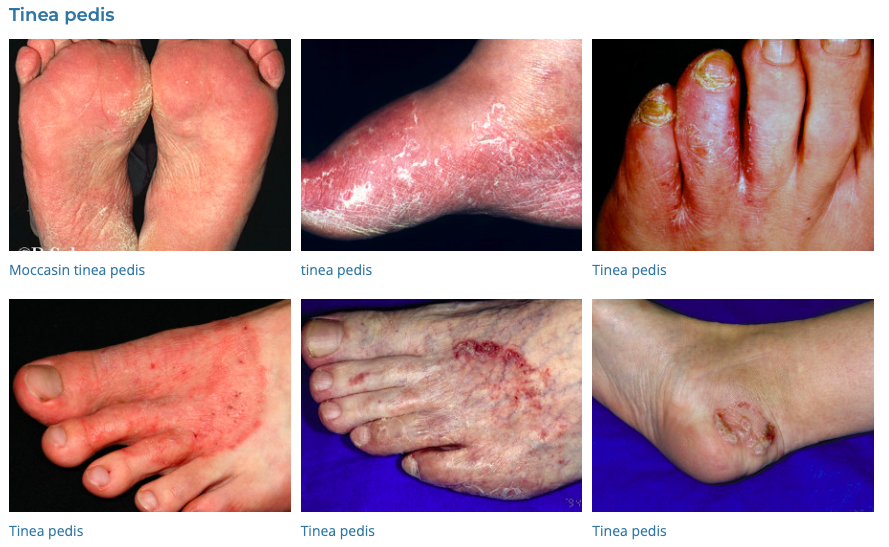
22. Nail Fungal Infections
- Description: Fungal infection of the nails, causing discoloration, thickening, and brittleness.
- Associations: Aging, diabetes, nail trauma, damp environments.
- Management: Oral antifungal medications (terbinafine), antifungal nail lacquers, sometimes nail removal.
- Dermnet: https://dermnetnz.org/topics/fungal-nail-infections
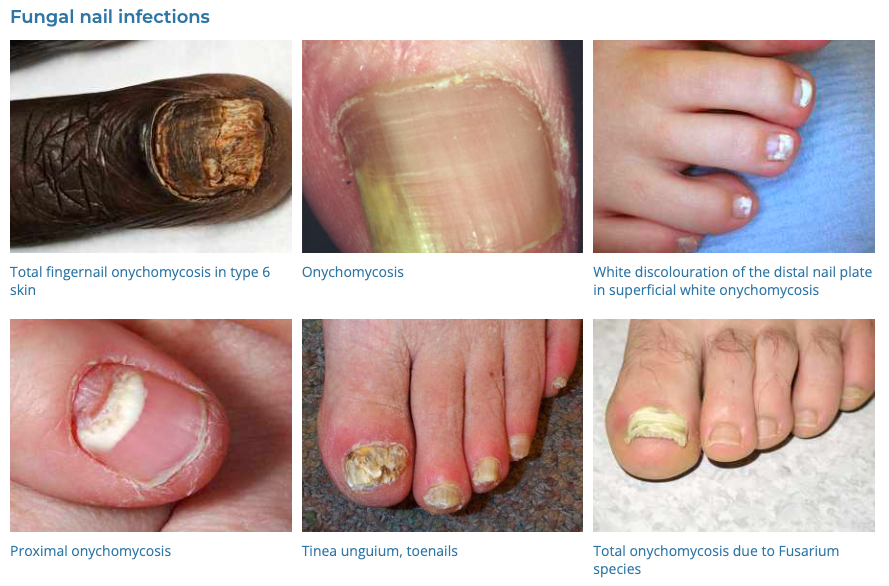
23. Molluscum Contagiosum
- Description: Viral infection (poxvirus) causing small, painless bumps on the skin.
- Associations: Skin-to-skin contact, sharing towels or clothing.
- Management: Often resolves spontaneously, treatments include cryotherapy, curettage, topical therapy.
- Dermnet: https://dermnetnz.org/topics/molluscum-contagiosum
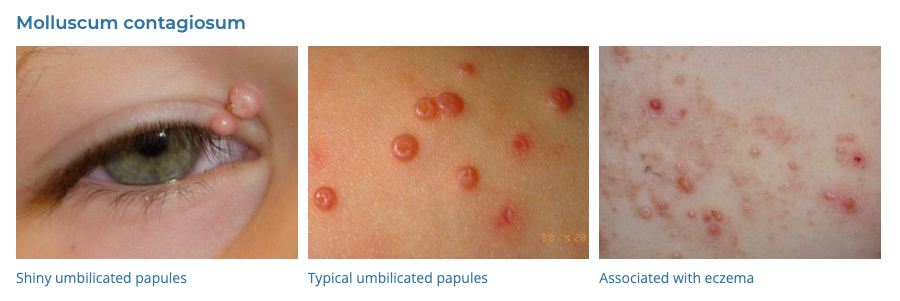
24. Vitiligo
- Description: Loss of skin pigment, resulting in white patches on the skin.
- Associations: Autoimmune conditions, family history.
- Management: Phototherapy, topical corticosteroids, skin grafting, cosmetics to camouflage.
- Dermnet: https://dermnetnz.org/topics/vitiligo

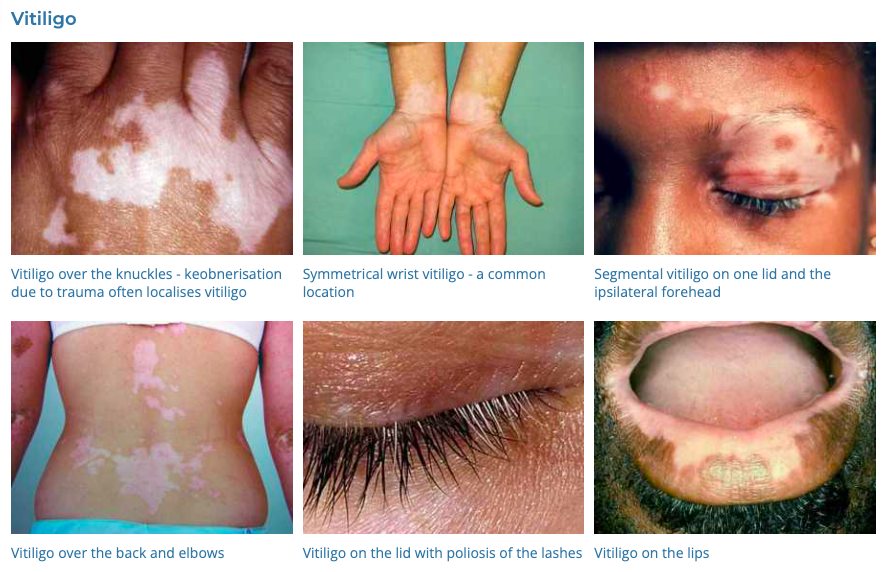
25. Pityriasis Rosea
- Description: Rash that begins as a large patch (herald patch), followed by smaller ones, often in a Christmas tree pattern.
- Associations: Possibly viral, more common in spring and fall.
- Management: Often self-limiting, topical steroids for itch, antihistamines, UVB light.
- Dermnet: https://dermnetnz.org/topics/pityriasis-rosea


26. Ichthyosis
- Description: Group of skin disorders causing dry, scaly skin.
- Associations: Mostly genetic, sometimes acquired.
- Management: Regular moisturizing, retinoids for severe cases, avoiding harsh soaps.
- Dermnet: https://dermnetnz.org/topics/ichthyosis-vulgaris
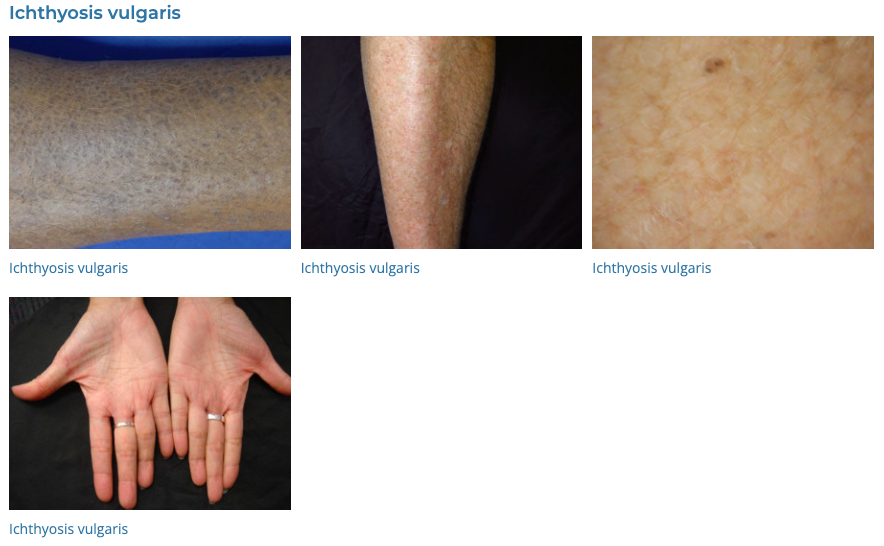
27. Keratosis Pilaris
- Description: Small, rough bumps on the skin, usually on arms, thighs, cheeks.
- Associations: Dry skin, atopic dermatitis.
- Management: Moisturizing creams, exfoliating, topical retinoids.
- Dermnet: https://dermnetnz.org/topics/keratosis-pilaris

28. Lichen Planus
- Description: Inflammatory condition causing purplish, itchy, flat-topped bumps on the skin.
- Associations: Immune system, hepatitis C infection, certain medications.
- Management: Topical corticosteroids, oral medication for severe cases, UVB light therapy.
- Dermnet: https://dermnetnz.org/topics/lichen-planus
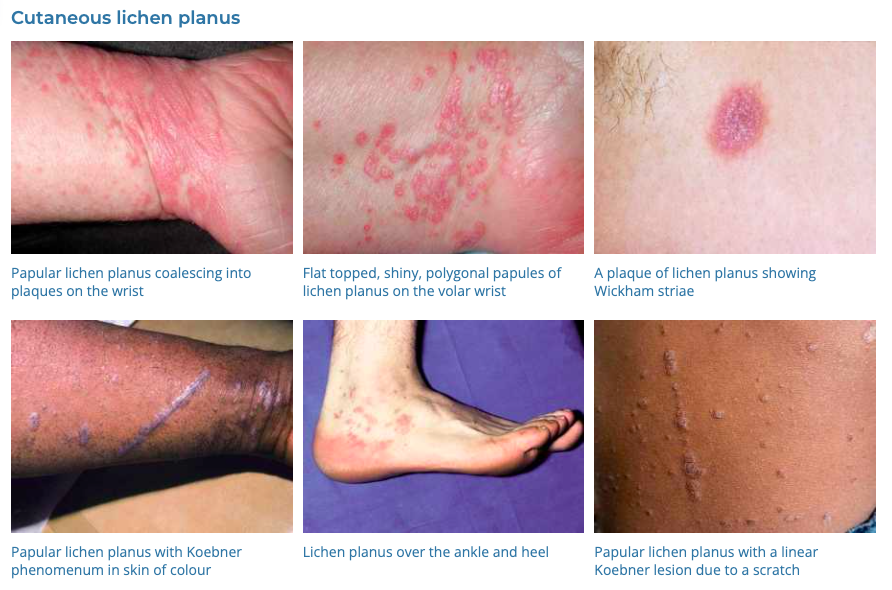
29. Sunburn
- Description: Red, painful skin that feels hot to the touch, caused by too much sun exposure.
- Associations: UV radiation, fair skin, lack of sunscreen.
- Management: Cool baths, moisturizers, over-the-counter pain relief, hydration.
- Dermnet: https://dermnetnz.org/topics/sunburn
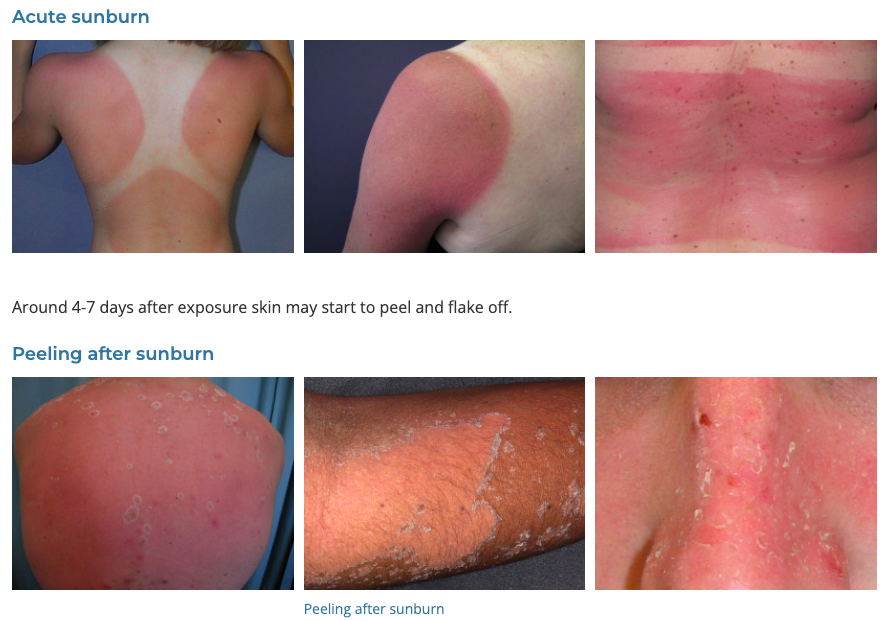
30. Photodermatoses
- Description: Skin reaction to sunlight, causing rashes or bumps.
- Associations: Exposure to UV light, more common in women and fair-skinned individuals.
- Management: Sun protection, topical corticosteroids, antimalarial medication for chronic cases.
- Dermnet: https://dermnetnz.org/topics/polymorphic-light-eruption
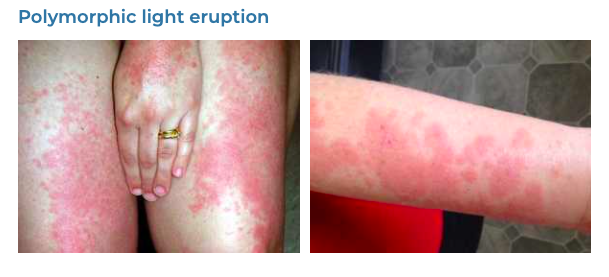
31. Cutaneous Drug Reactions
- Description: Wide range of skin reactions due to medication.
- Associations: Antibiotics, NSAIDs, anticonvulsants, and many others.
- Management: Discontinuation of the offending drug, topical or oral corticosteroids.
- Dermnet: https://dermnetnz.org/topics/drug-eruptions
- Too many possibilities
32. Intertrigo
- Description: Inflammation of skin folds caused by skin-on-skin friction in warm, moist areas, often with superinfection with Candida albicans
- Associations: Obesity, diabetes, heat, and humidity.
- Management: Keeping the area dry, topical antifungals or antibacterials, barrier creams.
- Dermnet: https://dermnetnz.org/topics/intertrigo
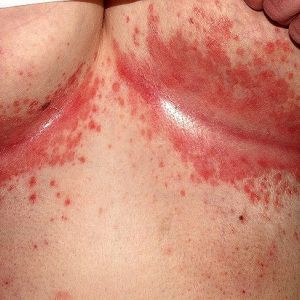
33. Pilonidal Cyst
- Description: Painful cyst or abscess near the tailbone, often with hair.
- Associations: Long periods of sitting, excess body hair.
- Management: Incision and drainage, antibiotics, surgery for recurrent cases.
- Dermnet: https://dermnetnz.org/topics/pilonidal-disease
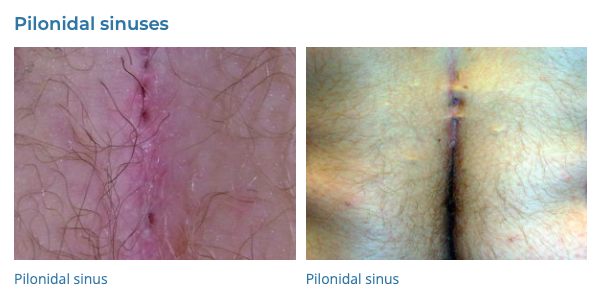
34. Epidermoid Cysts
- Description: Small, round lumps under the skin, possibly with a central pore; filled with keratin.
- Associations: Develops when skin cells multiply instead of shedding.
- Management: Often no treatment needed, surgical removal if bothersome.
- Dermnet: https://dermnetnz.org/topics/epidermoid-cyst
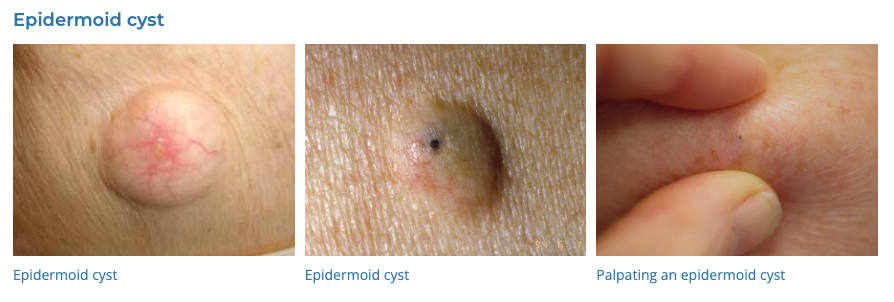
35. Lipomas
- Description: Soft, fatty lumps under the skin, usually noncancerous.
- Associations: Genetic factors, more common with age.
- Management: Generally no treatment required, removal for discomfort or cosmetic reasons.
- Dermnet: https://dermnetnz.org/topics/lipoma-and-liposarcoma
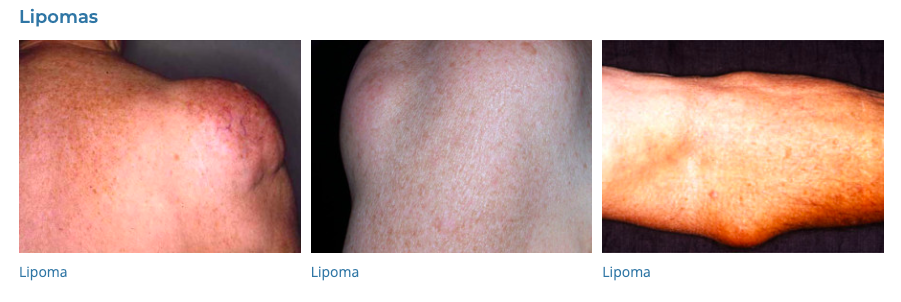
36. Folliculitis
- Description: Inflammation of the hair follicles, causing red, pimple-like bumps.
- Associations: Bacterial or fungal infection, irritation from shaving, hot tubs.
- Management: Topical antibiotics or antifungals, good hygiene, avoiding irritants.
- Dermnet: https://dermnetnz.org/topics/folliculitis

37. Milia
- Description: Small, white bumps on the skin, especially on the face, caused by keratin buildup.
- Associations: Skin damage (like sunburn), use of steroid creams, newborns.
- Management: Often resolve on their own, extraction by a professional if necessary.
- Dermnet: https://dermnetnz.org/topics/milium

38. Hidradenitis Suppurativa
- Description: Chronic skin condition causing abscesses and scarring, primarily in the armpits and groin (apocrine gland locations)
- Associations: Hormones, genetics, obesity, smoking.
- Management: Antibiotics, biologics, surgery for severe cases, lifestyle changes.
- Dermnet: https://dermnetnz.org/topics/hidradenitis-suppurativa
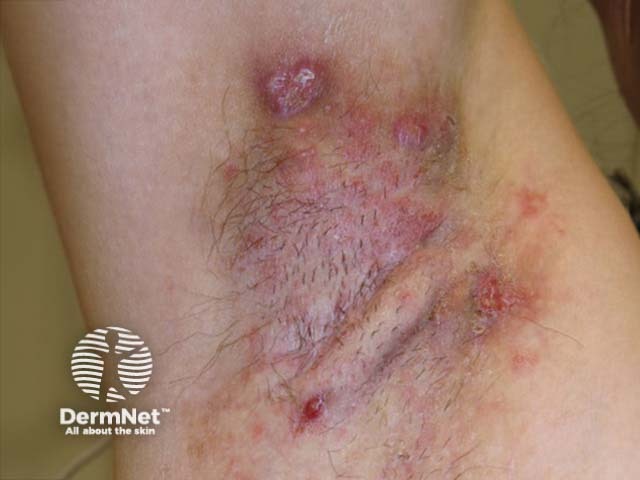
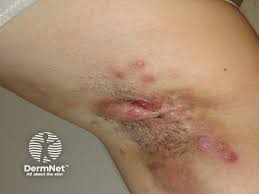
39. Perioral Dermatitis
- Description: Rash around the mouth, small red bumps or pus bumps, and mild peeling.
- Associations: Topical steroid use, skin care products, hormonal changes.
- Management: Discontinuing triggering products, oral or topical antibiotics.
- Dermnet: https://dermnetnz.org/topics/periorificial-dermatitis
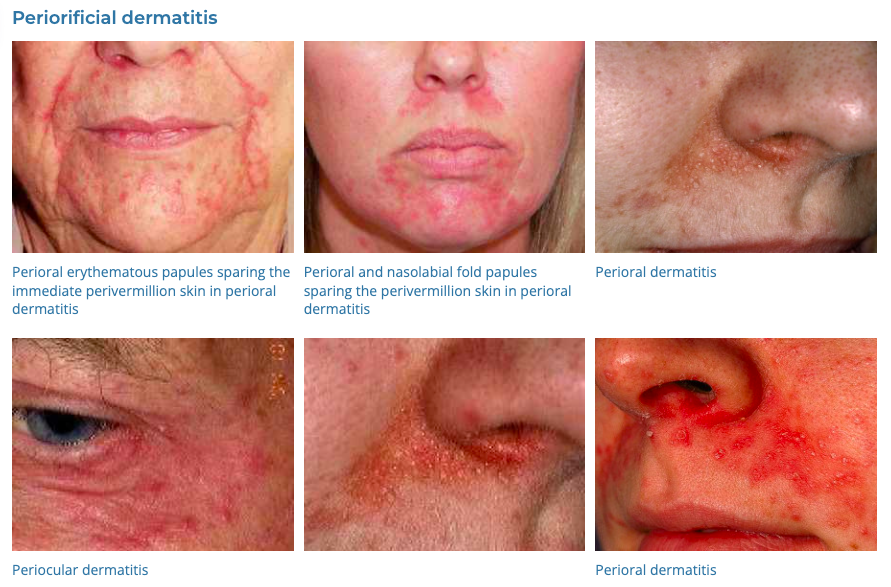
40. Cutaneous Lupus Erythematosus
- Description: Autoimmune disorder causing a rash on areas of the skin exposed to sunlight.
- Associations: Systemic lupus erythematosus, sun exposure.
- Management: Sun protection, topical corticosteroids, antimalarial drugs for systemic involvement.
- Dermnet: https://dermnetnz.org/topics/cutaneous-lupus-erythematosus






